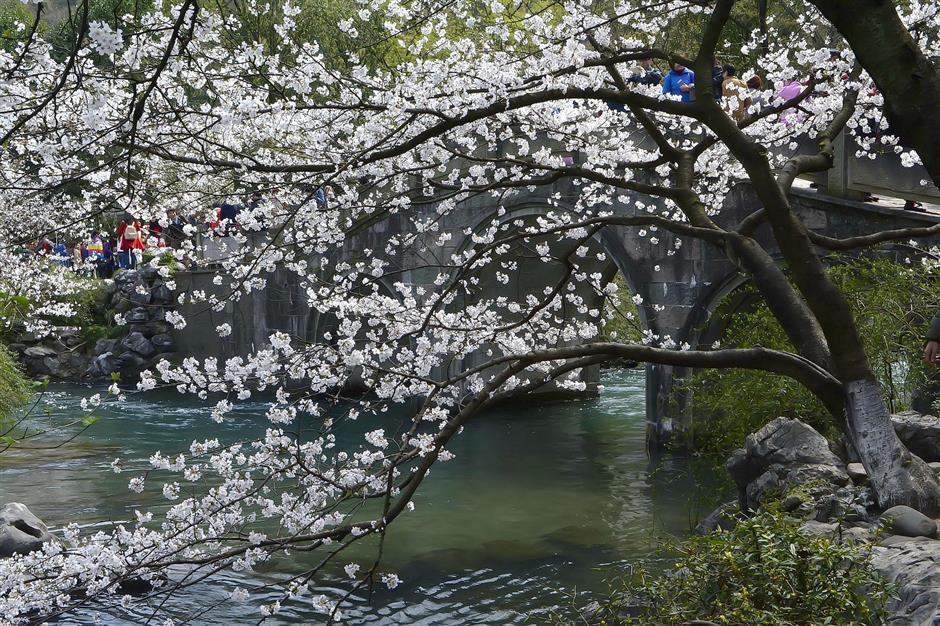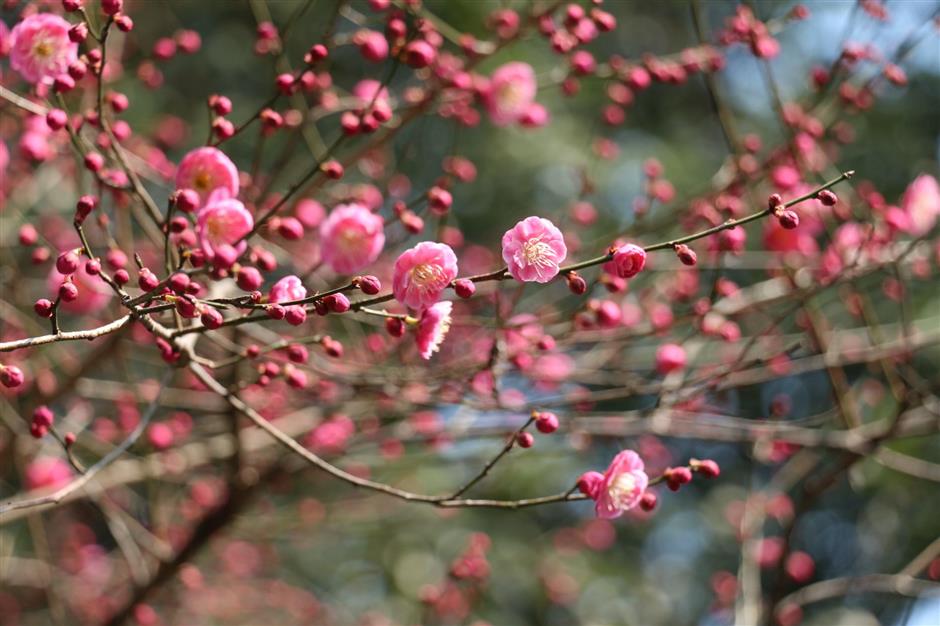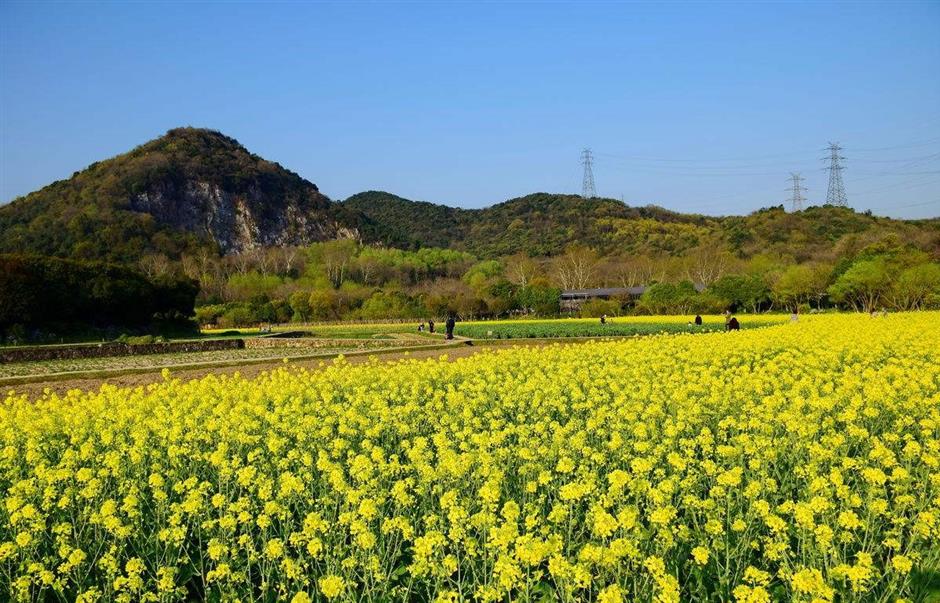Spring in Hangzhou is blooming marvelous
 0 Comment(s)
0 Comment(s) Print
Print E-mail Shine.cn, March 7, 2018
E-mail Shine.cn, March 7, 2018
Spring is without doubt the best season in Hangzhou. It may be several twigs of anonymous flowers poking out from beneath the garden at the other side of the wall, or a sight of the red China roses in the median strip when waiting in a car for the next traffic light to turn green.
But the first signal of spring in Hangzhou is always found on the embankment of West Lake.
The plum blossoms are still out there in full bloom. And, in less than two weeks, cherry blossoms, rapeseed blossoms and magnolia will join them.
The 1-kilometer Bai Causeway will be flanked by rows of peach blossoms and willows. When spring comes it is hard not to be enamored by the thriving colors of pink and light green in the warm breezes of March.
Shanghai Daily recommends some of the best scenic spots in Hangzhou so tourists can enjoy a relaxing half day of sunshine, fresh air and the generosity of the nature.

Cherry blossom
Every March, thousands of people flock to Japan to chase the cherry blossom season. Yet the irony is that you don’t need to run off to Japan because Hangzhou is home to vast stretches of the beautiful flower.
Taiziwan Park, located on Nanshan Road and adjacent to the Nanping Hill, has always been a popular place for outings and picnics in spring and autumn.
There are around 1,200 cherry blossoms, most of which were planted in 1988 when the park was built. The earliest buds come into shape in mid-March. It is not until the end of the month or early April that you will be able to bathe in a shower of several shades of pink.
The place is also known for its tulips and a large area of lawn. It has become an ideal place for newly-wed couples to take their wedding photos. So don’t be surprised if you see them in their fancy outfits, posing under the guidance of a photographer.
If you like solitude and spending time alone, Solitary Hill is the place to be. This is where ancient poet Lin Bu (967-1028) spent most of his life, surrounded by no one but his crane and plum blossoms.
The two giant “cherry blossom kings,” each with a diameter of 32 centimeters, stand beside West Lake, just opposite the West Lake Gallery on Gushan Road. There are also several dozens near the Qingxue Hut, which is presently a teahouse.

Plum blossom
Lingfeng Peak is probably the best place to see the plum blossom. There was a temple on the site more than 200 years ago. But the peak has been known for its plantation of plum blossoms since the 1920s.
In China, the flower denotes a special meaning for the literati. Together with the orchid, the bamboo and the chrysanthemum, it is viewed as one of the Four Noble Ones, which are praised for their uprightness and integrity.
Even if you are not aware of that, the flower stands out for its unique, noninvasive fragrance and bright color. It is even more eye-catching in the barren background where everything has yet to be awakened by the advent of spring.
Enjoying the flowers at Xixi Wetland is also a pleasant experience. The national park was built in 2005 as a government project to protect the ecosystem. Crisscrossed watercourses dominate the 260-hectare park, and visitors can go to different spots by sculling boat.
There are around 20 hectares of plum blossoms grown near the Meizhu Villa and the Xixi Plum Blossom Villa. Following the creak of an oar, it is a great way to appreciate the reflection of the flowers in silence and reminisce of how ancient poets were inspired by the beauty of the bloom.

Rapeseed flower
Compared to most spring flowers, rapeseed flowers are plain, humble and unremarkable. But when they appear in large quantities, it is some spectacle.
Among all other places, the Eight Diagrams Field (Bagua Field) is definitely the most convenient one for people living in the city. It was a ceremonial crop field owned exclusively by the imperial court during the Southern Song Dynasty (1127-1279) when Hangzhou was the capital.
Renovated in 2007, the 0.13-hectare field is based exactly on a bagua arrangement, which is an octagon shape with a tai chi symbol at the center and eight trigrams circling the outer rings.
Each sector, which one trigram represents, is grown with a type of cash crop, including rice, soybean, millet and pepper, among others. Longjing tea and other seasonal flowers, such as the rapeseed, occupy the area closer to the center.
The field is connected to the outskirts by bridges across the watercourses. Visitors can either head to the field directly by immersing themselves in a sea of rapeseed flowers, or maybe mount the Yuhuang Hill nearby and get a bird’s-eye view of the entire park.
Apart from that, the 2-hectare rapeseed field at the Zhejiang Gongshang University in Xiasha is also popular with college students and people living in the neighborhood.






Go to Forum >>0 Comment(s)